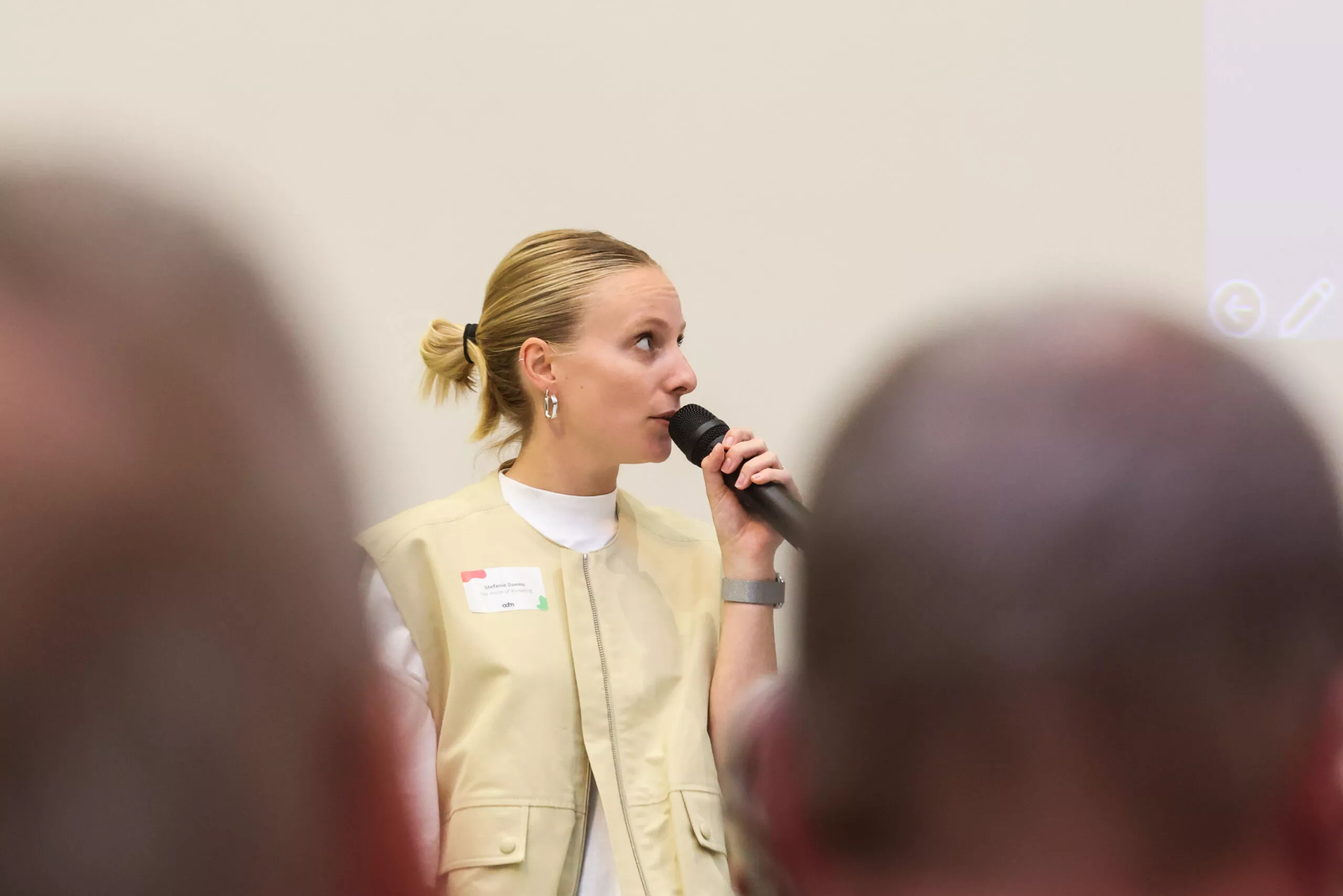
Article
Securing Innovation with Confidence: A Deep Dive with Stefanie Daems
In this interview, we sit down with Stefanie Daems, a Consulting Manager & Competence Lead Innovation at The House of Marketing (THoM), to explore the challenges of securing budgets for innovation and how her team’s unique approach helps companies navigate these challenges. Stefanie also shares practical tips on how to get started with innovation and future-proofing business models.
Stefanie, thank you for joining us. Let’s start with a fundamental question: Why is securing a budget for innovation crucial for businesses today?
Innovation is essential because it drives growth, improves efficiency, and enhances customer satisfaction—ultimately keeping companies competitive. I recently came across an insightful quote from a Global CEO study by PwC earlier this year, which revealed that 45% of CEOs believe their company won’t be viable if it stays on its current path. With the pressure increasing due to technological advancements like generative AI and macroeconomic trends such as climate change and high inflation, the need to future-proof business models is more evident than ever. However, obtaining the necessary budget and mandate to drive innovation is no easy task.
What makes it so challenging to secure an innovation budget?
There are several reasons. Firstly, there’s often limited or no dedicated budget for innovation. Usually, the marketing department must sacrifice part of their budget, and with so many priorities, innovation frequently gets overlooked. Securing funds for small tests is usually not an issue, but larger initiatives require more significant investments. Additionally, a lack of strategic focus can be a hurdle; a strong vision aligned with the business strategy is crucial for successful innovation. There’s also the fear of failure and difficulty demonstrating ROI, making it challenging to justify these investments. Lastly, time constraints and lengthy (admin) procedures often leave little room for thorough preparation and planning, which is where we can step in to alleviate the workload.
Given these challenges, how do you and your team at THoM help companies secure innovation budgets and de-risk these investments?
Our approach differs from other consulting players because of three key differentiators: validation, customer-centricity, and pragmatism. Firstly, we validate every step of the innovation process by testing assumptions, talking to customers, conducting surveys, and performing market assessments. This allows us to identify the need to iterate early on, saving a tremendous amount of time. We have a broad range of research methodologies tailored to different situations, from quantitative surveys to qualitative interviews with employees, ensuring that we capture the most relevant insights.
Secondly, we always start from the needs of the customer and, importantly, the employee. You can’t deliver exceptional customer experiences without considering the employee experience as well. Lastly, our pragmatic approach sets us apart. We often see innovation efforts tied to large strategic projects or transformations that take months or even years to complete, resulting in a slide deck with no practical application. We design your vision, solution, and roadmap and help you execute it.
Can you provide some examples of the types of questions your clients bring to you and how your methodology helps address them?
Absolutely. For instance, an HR player recently asked us to help them draw out their five-year strategy across offerings, people, processes, and tools. Another example is an FMCG company that knew they needed to do something with generative AI but wasn’t sure how it applied to their business. We also had a client ask how they could improve their customer experience while becoming more cost-efficient. These are very different questions, but our methodology allows us to make the process as low-risk as possible, regardless of the challenge.
What steps can companies take today to get started with innovation and secure the necessary budget?
First, gain confidence in your investment. It’s much easier to defend your position when you have talked to customers, scanned your market, and discussed feasibility with technical teams. This validation provides a baseline for your KPIs, offering a more realistic view of your business case.
Second, know your audience. Often, marketers focus solely on marketing metrics, but it’s essential to prioritize business metrics and speak the language of your leadership team. Ensure that from the beginning, like during an ideation workshop, the ideas reflect the business requirements for your leadership.
Lastly, foster a culture of innovation. This doesn’t have to be expensive—empower employees to think and act like entrepreneurs. Something as simple as a dedicated space for idea exchange between departments or celebrating success stories can make a big difference. These steps will help you create a pragmatic, action-oriented plan that you can present to management. Instead of saying, “We want a budget to work on generative AI,” you can say, “We see use cases X, Y, and Z and need this budget to provide this ROI.” That’s a much more compelling story.
Thank you, Stefanie. Is there anything else you’d like to add about how THoM approaches innovation?
I’d like to emphasize that we always start from needs. During the research phase, we talk to clients, employees, and other stakeholders to ensure we operate in a customer-centric way. We look at bottlenecks, identify opportunities, and use extensive research methodologies to guide our decisions. Whether we’re redesigning a customer support flow or exploring the potential of generative AI for e-commerce, our methodology remains consistent at its core, even if the application varies. That’s how we help companies innovate with confidence.